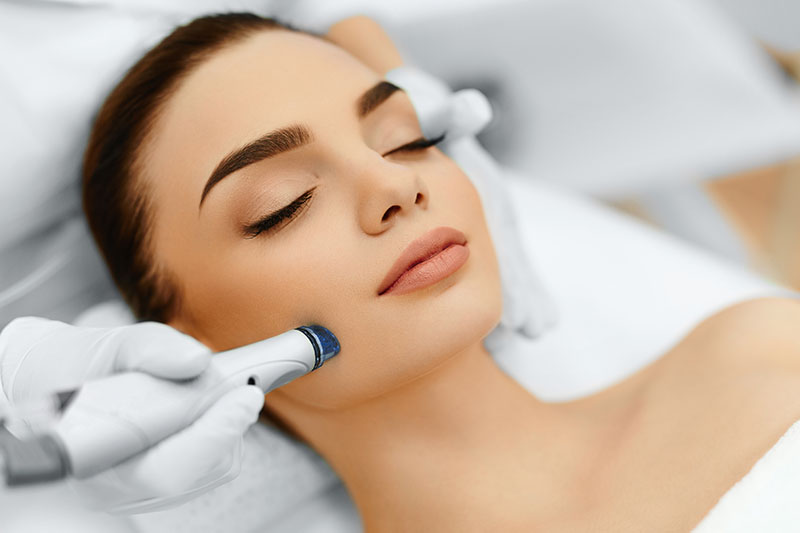
Microdermabrasion is a minimally invasive exfoliation treatment designed to address sun damage, scars, wrinkles, and hyperpigmentation. Beyond its cosmetic benefits, it also promotes improved circulation and lymphatic flow. Results are visible immediately, and there is no downtime—patients can resume their normal activities right after the procedure. Performed in-office without anesthesia, microdermabrasion can be safely combined with other treatments such as chemical peels or laser therapy.
Unlike dermabrasion, which removes multiple skin layers and is considered a surgical procedure for more severe skin issues, microdermabrasion is far less invasive.
Request an AppointmentThe Microdermabrasion Procedure
Typically performed by an aesthetician, microdermabrasion uses a handheld device to spray fine aluminum oxide crystals over the targeted skin area. These crystals exfoliate the skin’s surface while a vacuum system simultaneously removes the crystals along with dead skin cells, revealing fresh, rejuvenated skin underneath. Treatment sessions usually last between five and sixty minutes. Because results are temporary, treatments are recommended every 2 to 4 weeks for ongoing improvement.
Risks and Considerations
Microdermabrasion is safe for all skin types, including Asian and darker skin tones, which can be more prone to discoloration with other treatments. Side effects are generally mild and may include temporary redness or irritation. Patients over 70 may face a slightly higher risk of bruising or minor skin abrasions. It’s important to avoid sun exposure after treatment, as the procedure removes some of the skin’s natural protective barrier.
For individuals with a history of cold sores, microdermabrasion may trigger an outbreak. In these cases, it is advisable to avoid treatment near the lips or take preventive antiviral medication before the procedure.
